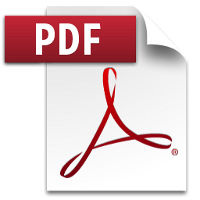 National Road Traffic Act, 1996
National Road Traffic Act, 1996
R 385
Mine Health and Safety Act, 1996 (Act No. 29 of 1996)RegulationsGuideline for a Mandatory Code of PracticePrevention of Fires at MinesPart A : The Guideline5. Definitions and Acronyms |
| 5.1 | Abandoned area means an area defined in the latest: |
| 5.1.1 | Guideline for the Compilation of a Mandatory Code of Practice for the Prevention of Flammable Gas and Coal Dust Explosions in Collieries. |
| 5.1.2 | Guideline for the Compilation of a Mandatory Code of Practice for the Prevention of Flammable Gas Explosions in Mines Other Than Coal Mines. |
| 5.2 | Confined space means a space defined in the latest Guideline for the Compilation of a Mandatory Code of Practice for the Management of Working in Confined Spaces at Mines. |
| 5.3 | COP(s) means Code(s) of Practice. |
| 5.4 | Controls means the actions or interventions whose integrity will ensure that the hazard will not cause harm and should be recognised as such in the controls register. |
| 5.5 | Critical control means a control that is essential in preventing a fire which, if absent or fails, will result in a significant increase in the risk despite the existence of the other controls. |
| 5.6 | DMPR means the Department of Mineral Petroleum and Resources. |
| 5.7 | Fire means a rapid oxidation process in which a chemical reaction results in the evolution of light, gases and heat energy varying in intensity. |
| 5.8 | Fire alarm system means a system or portion of a combination system that consists of components and circuits arranged to monitor and announce the status of a fire condition or of supervisory signal-initiating devices to initiate the appropriate response to those signals. |
| 5.9 | Fire detection system means the combination of fire alarm systems and fire detectors which are designed to detect the presence of a fire and initiate action. |
| 5.10 | Fire hazard means a condition that presents the potential for harm to people and damage to property, or the environment, because of a fire. |
| 5.11 | Fire prevention measures means actions deemed necessary and suitable to inhibit the initiation of a fire or stop the evolution of a developing fire. |
| 5.12 | Fire protection means actions deemed necessary and suitable to safeguard the life and health of individuals and/or the integrity of equipment, machinery and infrastructure that may be exposed to a fire. |
| 5.13 | Fire risk means a measure of the probability and severity of adverse effects on persons, equipment, machinery, infrastructure and the environment that may result from a fire on a mine. |
| 5.14 | Fire suppression system means a system designed to extinguish, control and prevent fire from spreading by the localised application of extinguishing agents. |
| 5.15 | Fire zoning means a system that is used to prevent or limit the spread of a fire to or from one part of the mine to another as informed by the fire hazard register. |
| 5.16 | Flame retardant means a substance or material that inhibit or delay the spread of a fire by suppressing the chemical reactions in the flame or by the formation of a protective layer on the surface of a material. |
| 5.17 | Hot work means work involving burning, heating, welding, grinding or a similar operation that is capable of initiating fires or explosions. |
| 5.18 | MHSA means the Mine Health and Safety Act, 1996 (Act No 29 of 1996) as amended. |
| 5.19 | Mine as defined in the MHSA. |
| 5.20 | OEM(s) means original equipment manufacturer(s). |
| 5.21 | SABS means the South African Bureau of Standards. |
| 5.22 | SANS means the South African National Standard. |
| 5.23 | SDS(s) means [material] safety data sheet(s) [solids, liquids and gases]. |
| 5.24 | Smoke detector means an automatic device designed to detect the presence of smoke and initiate action. |
| 5.25 | Spontaneous combustion means an oxidation reaction occurring without an external heat source that results in an increase of temperature leading to the propagation of an open flame. |